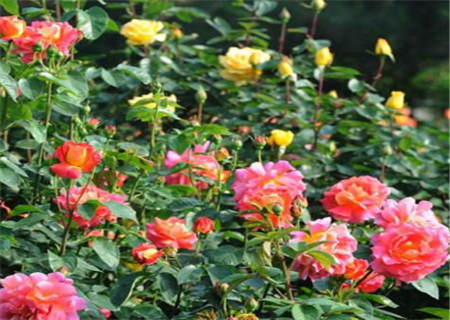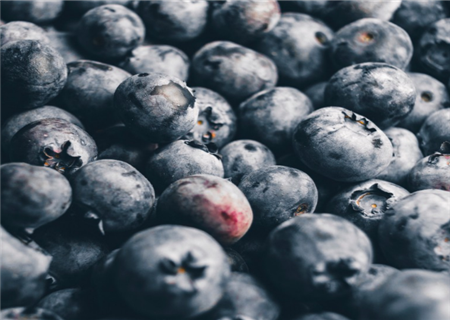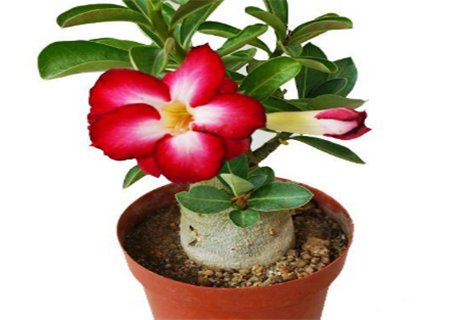What are the reasons why the "Queen of Flowers" rose does not bloom? How to deal with it? When is cutting best? attached cuttings
Rose, known as the queen of flowers, also known as "moon red". Generally red, or pink, occasionally white and yellow, can be used as ornamental plants, can also be used as medicinal plants. Many farmers like to plant rose, so what are the reasons why rose does not blossom? How to deal with it? When is the best time for roses to be cut? What are the cutting methods?
What are the reasons why the rose does not blossom? How to deal with it?
The main results are as follows: 1. The soil used for cultivation is barren or has not been changed for a long time, poor fertility and lack of nutrition, especially the low content of phosphate fertilizer, which inhibits the normal differentiation of flower buds, thus affecting the normal flowering.
2. The cultivation environment is located in the shade with poor ventilation, and the light is insufficient, which inhibits the germination of flower buds.
3. The pruning work is not done properly, the branches are too dense, and the nutrients are dispersed, so that the flower buds lack the necessary nutrients for growth.

4. The high temperature in midsummer makes the soil temperature rise to more than 30 ℃, which inhibits the normal physiological function of the root system, and the high temperature is easy to cause water shortage, which makes the soil layer of the root system become dry and hot, which can easily lead to wilting of branches and leaves and scorching of the leaf edge, which is not conducive to autumn flowering. Therefore, summer watering must be sufficient to cover the basin soil properly, and small corncobs and chopped plant stalks can be used. When watering, the mulch should be removed as far as possible to let the water come into direct contact with the basin soil, so as to reduce the soil temperature and control the amount of water evaporation.
5. The temperature in early spring in the north is difficult to predict, and frost injury occurs from time to time. This period is the sprouting of axillary buds of rose, the differentiation of flower buds and the growth of new shoots, so it is necessary to avoid the frost damage caused by late frost and cold current, otherwise the growth of flower buds will be hindered and it is difficult to conceive buds and bloom. The withering of new shoots after freezing will reduce the flowering rate of the first flowering. To sum up, timely and effective protective measures should be taken against frost injury.
6. The final reason may be that the plant is infected by the disease, the plant can not be controlled timely and effectively, which leads to death and will not blossom naturally.
Second, when is the best time for rose cutting? What are the cutting methods?
1. Cuttage of live buds
The selection of live bud cuttings should be carried out from April to May or September to October, and the cuttings should generally choose the strong branches and leaves free of diseases and insect pests in the current year. After flowering, clean up the flowers and old leaves on the cuttings, wait for the branches to be fully nourished, and the thick leaves of the branches are strong. In the windless morning, cut down about 10 cm of branches, leaving two compound leaves and two leaflets at the base, and the rest of the leaves are removed.
The cut branch incision can be glued with rooting powder and inserted into the soil prepared in advance. The soil requires ventilation and drainage. Nutritive soil such as rotten leaf soil or coarse sandy soil can be selected. Generally, 2/3 of the branch is inserted, leaving 2-3 buds on the outside; watering the soil after planting; with new buds growing and old leaves not falling, it means that the cuttings are successful and the cuttings have taken root and survived.
2. Hardwood cutting method
The principle of hardwood cutting is the same as that of new bud cutting. strong branches are cut and inserted into the soil after treatment, and then watered through after planting; then a frame is used, covered with a film, and placed in a sunny position to maintain moisture. In the spring of next year, the film can be opened, and the cuttings can be transplanted when the leaves turn green and the roots grow well.
3. Bud insertion method
When the new buds grow vigorously in spring, break or cut off the new buds with strong growth and full bud head, wash and place them. Then break the soil prepared in advance, insert the new bud into the hole with a wooden stick, and insert the new bud into the hole with a depth of 1/3 of the bud length. After inserting it, press the soil around it, pour water through it, cover it with the same film, keep ventilation twice a day, and pay attention to soil moisture. It will take root in about 15 days, and the film will be removed in 20 days to prepare for transplantation.
1. Spray water moderately
No matter which kind of cutting method, the new seedlings should be nursed after cutting. The last step of cutting is to pour water through, and then cover the film, in the later stage, we should often open the film to spray water to the cuttings, in order to improve the humidity in the greenhouse. Check before spraying water, look at the seedbed and cuttings, according to the humidity spray, hot season about two days can be sprayed once, cold season about once a week; in addition, as the cuttings grow up, water demand will also increase, we according to the specific circumstances of their own discretion.
2. Control temperature
The suitable dimension for Chinese rose is 23-27 degrees, and the temperature in spring and autumn is relatively moderate, and the wind barrier or film is built to prevent low temperature clothing in the morning and evening, and the seedlings are frozen. In summer, when the temperature is too high, it is necessary to build a two-story shade shed, and water is sprayed on the shade shed sooner or later. Pots are also needed around the seedlings, mainly to cool down. Too high or too low temperature clothing is not conducive to the growth of cuttings.
3. Ventilation and ventilation
After the cuttings were finished, we built a film on the seedlings and made a film shed, and regularly sprayed water into the shed, and the seedlings carried out photosynthesis in the closed shed, which only ensured the temperature and humidity. In addition, we should also regularly open the shed for ventilation and maintain ventilation in the shed.
Time: 2019-04-07 Click:
- Prev

"healthy fruit" how many blueberries should I eat in a day? With planting conditions and planting methods!
Blueberry, one of the five healthy fruits in the world, belongs to Azaleaceae and blueberry. The fruit is rich in nutrients, which can prevent brain nerve aging, protect vision, strengthen heart, fight cancer, soften blood vessels, enhance human immunity and other functions. How much blueberries are better to eat in a day?
- Next

Are desert roses poisonous? How should I water it? What if the leaves turn yellow?
Desert rose, also known as Tianbao flower. It is not a rose growing in the desert, nor is it closely related or similar to the rose. Because of its resistance to heat and cold, it is named desert rose because its origin is close to the desert and as red as a rose. Is the desert rose poisonous? How to water desert roses
Related
- Fuxing push coffee new agricultural production and marketing class: lack of small-scale processing plants
- Jujube rice field leisure farm deep ploughing Yilan for five years to create a space for organic food and play
- Nongyu Farm-A trial of organic papaya for brave women with advanced technology
- Four points for attention in the prevention and control of diseases and insect pests of edible fungi
- How to add nutrient solution to Edible Fungi
- Is there any good way to control edible fungus mites?
- Open Inoculation Technology of Edible Fungi
- Is there any clever way to use fertilizer for edible fungus in winter?
- What agents are used to kill the pathogens of edible fungi in the mushroom shed?
- Rapid drying of Edible Fungi

